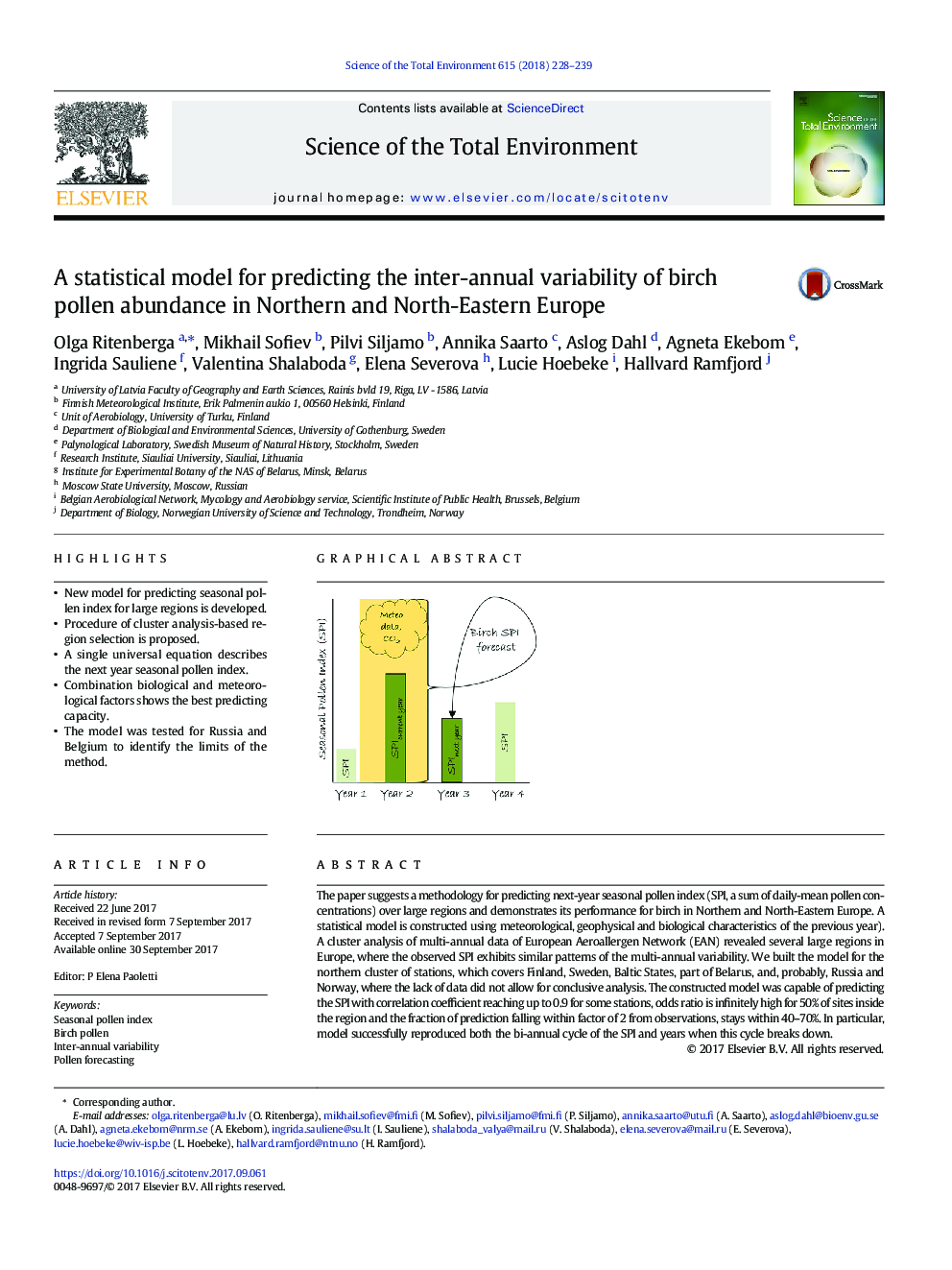| کد مقاله | کد نشریه | سال انتشار | مقاله انگلیسی | نسخه تمام متن |
|---|---|---|---|---|
| 5749777 | 1619689 | 2018 | 12 صفحه PDF | دانلود رایگان |
- New model for predicting seasonal pollen index for large regions is developed.
- Procedure of cluster analysis-based region selection is proposed.
- A single universal equation describes the next year seasonal pollen index.
- Combination biological and meteorological factors shows the best predicting capacity.
- The model was tested for Russia and Belgium to identify the limits of the method.
The paper suggests a methodology for predicting next-year seasonal pollen index (SPI, a sum of daily-mean pollen concentrations) over large regions and demonstrates its performance for birch in Northern and North-Eastern Europe. A statistical model is constructed using meteorological, geophysical and biological characteristics of the previous year). A cluster analysis of multi-annual data of European Aeroallergen Network (EAN) revealed several large regions in Europe, where the observed SPI exhibits similar patterns of the multi-annual variability. We built the model for the northern cluster of stations, which covers Finland, Sweden, Baltic States, part of Belarus, and, probably, Russia and Norway, where the lack of data did not allow for conclusive analysis. The constructed model was capable of predicting the SPI with correlation coefficient reaching up to 0.9 for some stations, odds ratio is infinitely high for 50% of sites inside the region and the fraction of prediction falling within factor of 2 from observations, stays within 40-70%. In particular, model successfully reproduced both the bi-annual cycle of the SPI and years when this cycle breaks down.
99
Journal: Science of The Total Environment - Volume 615, 15 February 2018, Pages 228-239
